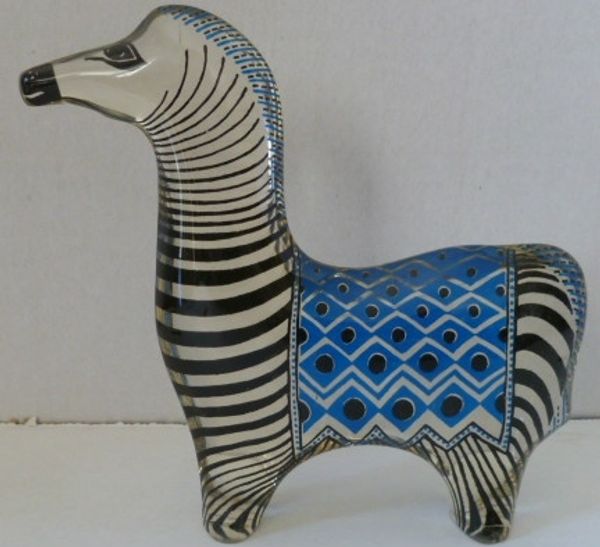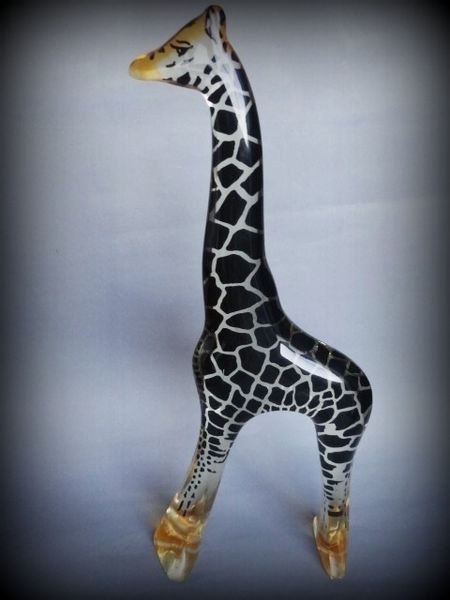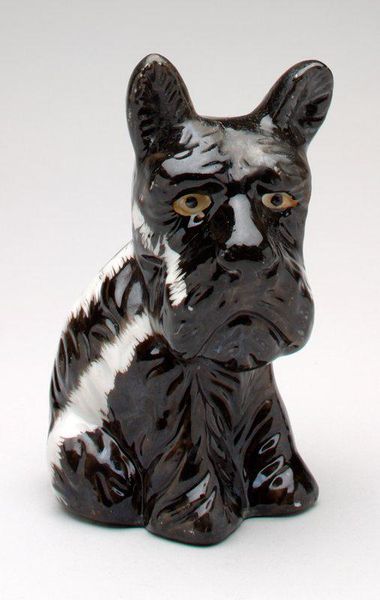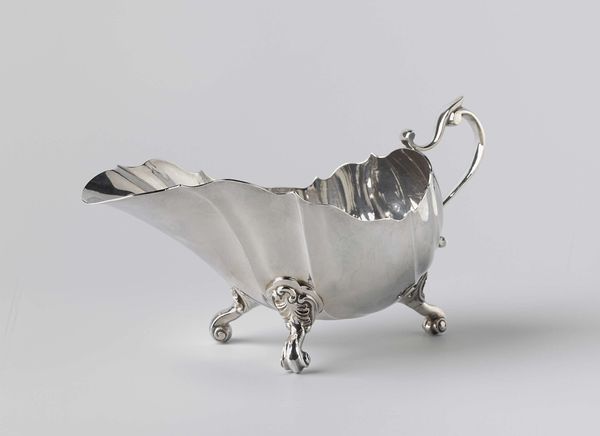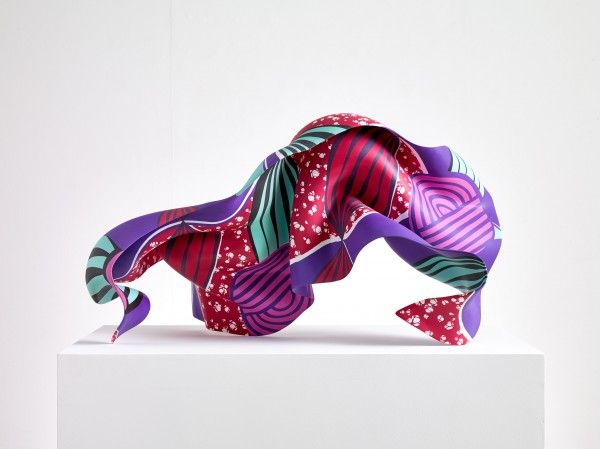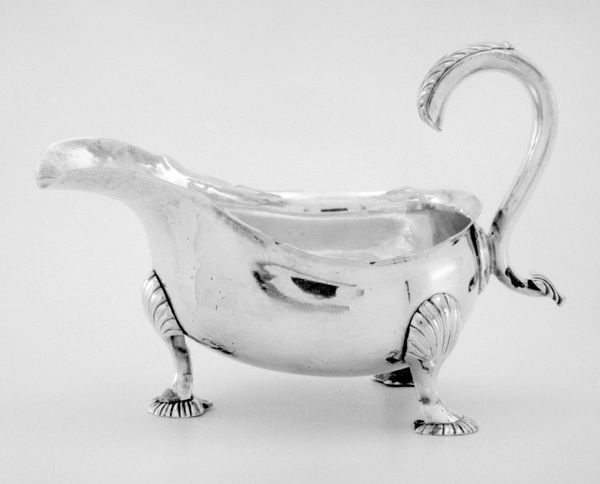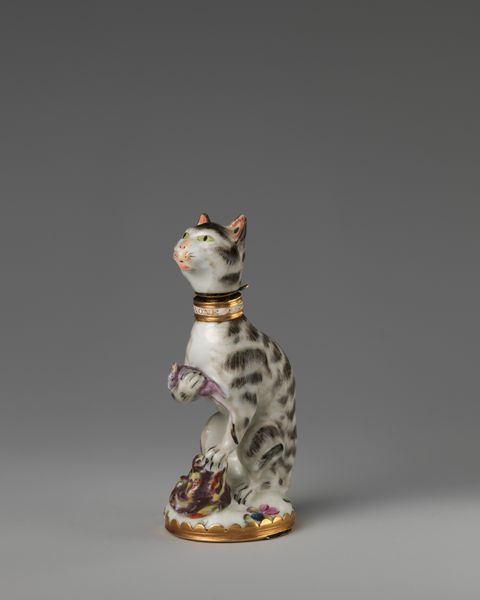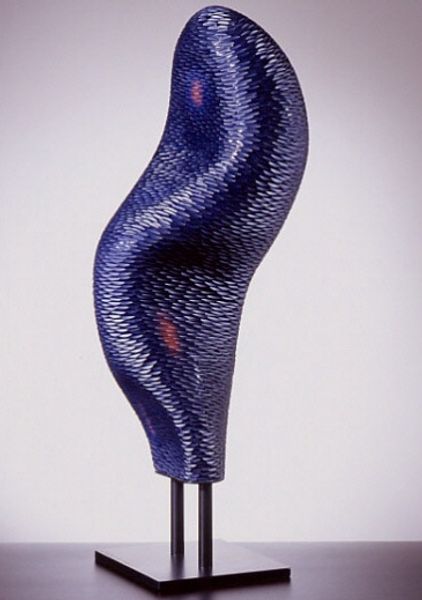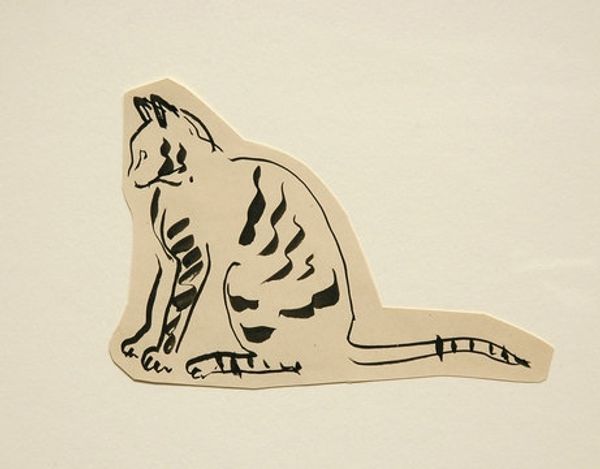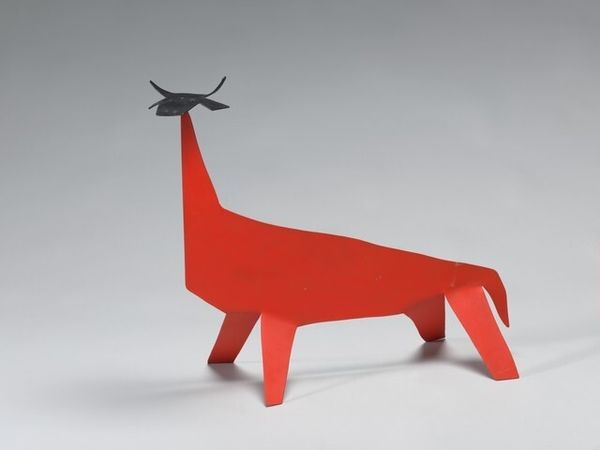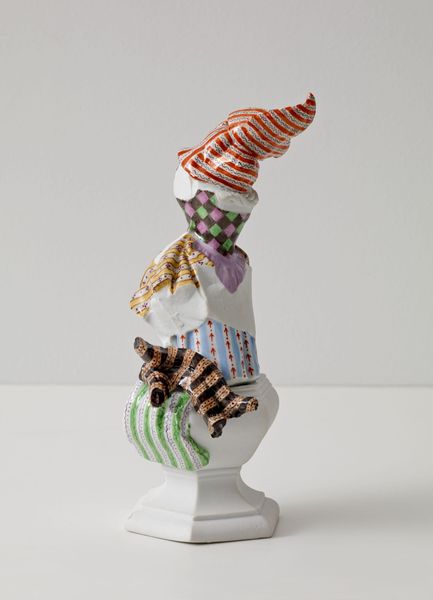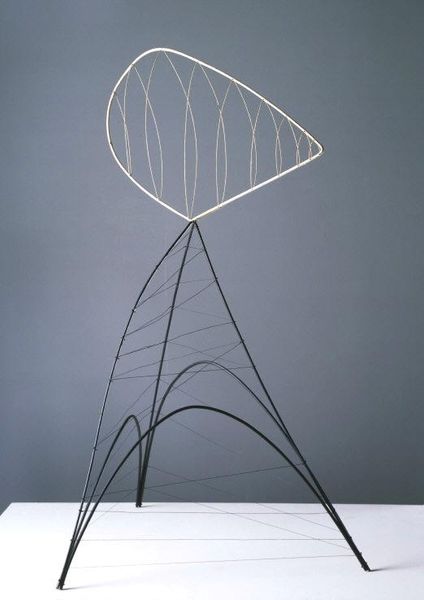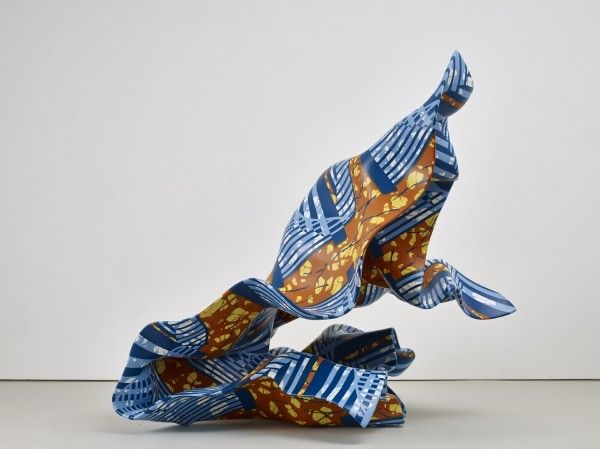
sculpture
#
abstract-expressionism
#
3d sculpting
#
circular oval feature
#
3d model
#
animal
#
3d printed part
#
jewelry design
#
virtual 3d design
#
round design
#
figuration
#
3d shape
#
geometric
#
sculpture
#
3d modeling
#
line
#
round circular shape
Copyright: Abraham Palatnik,Fair Use
Curator: Welcome. Today we are considering "Cat," a figural sculpture attributed to Abraham Palatnik. Editor: It strikes me immediately as playful, almost cartoonish, yet the meticulous application of line introduces a surprising level of sophistication. Curator: Indeed. Palatnik, best known for his work with Kinechromatic art, incorporates a decidedly kinetic sensibility even in this static piece. Notice how the black and white lines warp and distort, creating an optical illusion of movement across the surface. Editor: The high contrast evokes op art, and that lends itself to broader explorations of visual perception and perhaps a disruption of the conventional ideas around domesticated animals. Curator: An astute point. The very essence of the cat is distilled to line, form, and a dynamic interplay of positive and negative space, eschewing traditional sculptural concerns of mass and volume. We must also note that while this piece leans into abstraction, it’s never fully divorced from representation. The cat is always recognizable, anchored by its simple silhouette and the gaze formed by two, small gemstones. Editor: That tension between representation and abstraction is so critical. Palatnik is referencing a universal symbol—the cat—while simultaneously subverting it through an unexpected, almost clinical application of geometric abstraction. Is he trying to push against our ideas about art as decoration? Curator: Perhaps he’s engaging with—rather than pushing against—the blurring of boundaries between art and design that characterized much mid-century artistic production. By reducing the feline form to its most essential visual elements, Palatnik invites us to reconsider our preconceived notions of the natural world. Editor: This piece really disrupts conventional sculptural expectations. The playful figure combined with such precision allows for interpretations that touch on a range of cultural discussions concerning perception and design. Curator: Yes, and by calling attention to the very building blocks of visual experience—line, shape, color—Palatnik’s “Cat” encourages us to look anew, not only at the artwork, but also at the world around us.
Comments
No comments
Be the first to comment and join the conversation on the ultimate creative platform.
